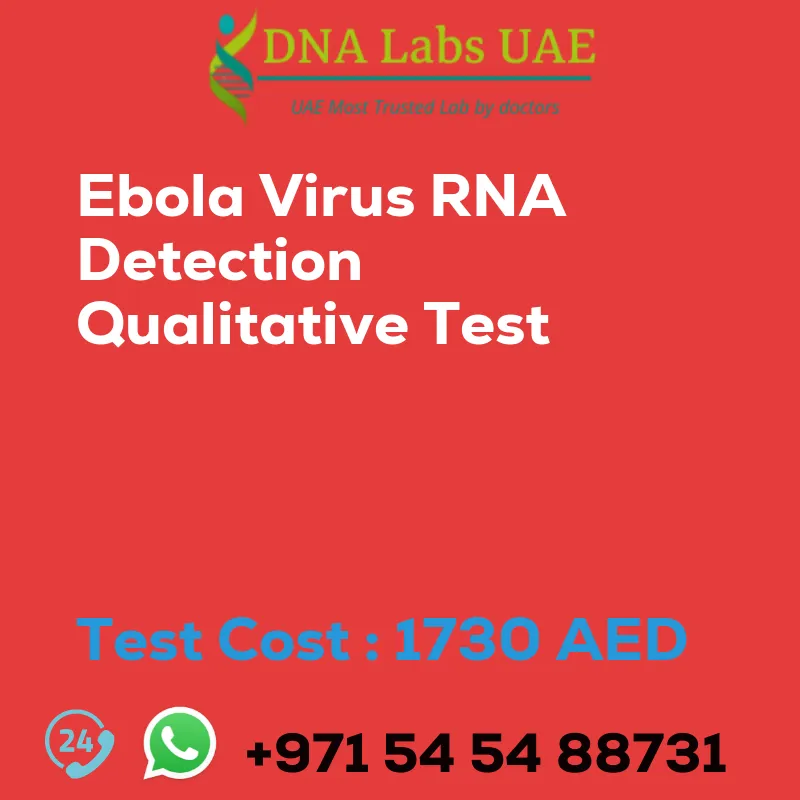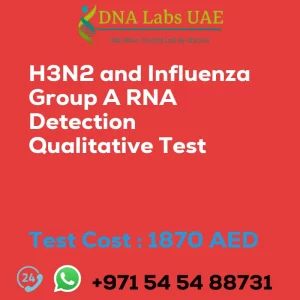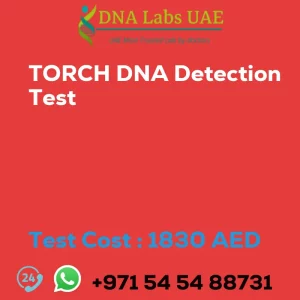Ebola Virus RNA Detection Qualitative Test
At DNA Labs UAE, we offer the Ebola Virus RNA Detection Qualitative Test for AED 1730.0. This test is used to detect the presence of the Ebola virus RNA in a patient’s sample.
Test Components and Price
The test components include:
- Whole Blood
- Serum
- Plasma
- C.S.F.
- Nasal Swabs
- Throat Swabs
- Body Secretions
- Organs or Other Bodily Fluids
The cost of the test is AED 1730.0.
Report Delivery
The report will be delivered within 4 working days via email (within 48 hours) or on the phone (within 36 hours).
Method and Test Type
The Ebola Virus RNA Detection Qualitative Test is performed using the Real Time PCR method. It is a viral test.
Test Department and Doctor
The test is conducted by our Genetics department and overseen by a physician.
Pre Test Information
Prior to the test, patients are required to sign a consent document and provide any relevant clinical history of Ebola virus infection.
Test Details
The Ebola Virus RNA Detection Qualitative Test is a crucial diagnostic tool used in outbreak settings or suspected cases of Ebola infection. It involves collecting a blood sample from the patient and isolating the RNA from the sample. The RNA is then reverse transcribed into complementary DNA (cDNA) using a reverse transcriptase enzyme. This cDNA is amplified using polymerase chain reaction (PCR) with specific primers targeting regions of the Ebola virus genome. If the Ebola virus RNA is present, the amplification process will produce a detectable signal, indicating a positive result for Ebola virus infection.
It is important to note that this test is qualitative, providing a simple “yes” or “no” answer regarding the presence of Ebola virus RNA. It does not provide information about the viral load or stage of infection.
The Ebola Virus RNA Detection Qualitative Test requires specialized laboratory equipment and trained personnel. It is typically performed in reference laboratories or specialized testing centers.
This test plays a crucial role in identifying and containing Ebola virus outbreaks. Early detection allows for prompt isolation and treatment of infected individuals, preventing further spread of the disease.
| Test Name | Ebola Virus RNA Detection Qualitative Test |
|---|---|
| Components | |
| Price | 1730.0 AED |
| Sample Condition | Whole Blood, serum, plasma, C.S.F. nasal swabs, throat swabs. Body secretions, organs or other bodily fluids |
| Report Delivery | 4th Working Day Email : 48 hours.On phone : 36 hours |
| Method | Real Time PCR |
| Test type | Viral |
| Doctor | Physician |
| Test Department: | Genetics |
| Pre Test Information | Need to sign Consent document and bring any clinical history of patient forEbola Virus (RNA Detection) QualitativeTest |
| Test Details |
The Ebola virus (RNA detection) qualitative test is a diagnostic tool used to detect the presence of the Ebola virus RNA in a patient’s sample. This test is primarily used in outbreak settings or suspected cases of Ebola infection. The test involves collecting a blood sample from the patient and isolating the RNA from the sample. The RNA is then reverse transcribed into complementary DNA (cDNA) using a reverse transcriptase enzyme. This cDNA is then amplified using a technique called polymerase chain reaction (PCR). During the PCR process, specific primers are used to target and amplify regions of the Ebola virus genome. If the Ebola virus RNA is present in the patient’s sample, the amplification process will result in the production of a detectable signal, indicating a positive result for Ebola virus infection. The test is considered qualitative, meaning it provides a simple “yes” or “no” answer regarding the presence of the Ebola virus RNA. It does not provide information about the viral load or the stage of infection. It is important to note that this test is highly sensitive and specific, but it requires specialized laboratory equipment and trained personnel to perform. It is typically conducted in reference laboratories or specialized testing centers. The Ebola virus (RNA detection) qualitative test is a crucial tool in identifying and containing Ebola virus outbreaks. It allows for early detection of the virus, enabling prompt isolation and treatment of infected individuals, and preventing further spread of the disease. |








